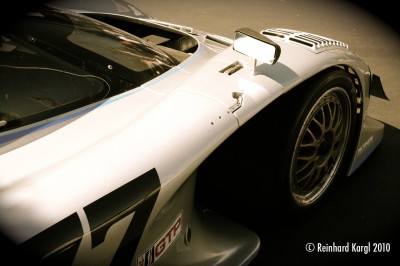Here is a picture I took at Mazda’s North American headquarters in Irvine, California. The occasion was the 2010 SevenStock meet, an annual gathering for rotary engine enthusiasts.
The car pictured is the RX-792P of 1992. This particular car was not very successful on the track, but I think it remains one of the most beautiful race cars ever built. One year earlier, a similar car with the same 4-rotor Wankel engine had been victorious in one of the most grueling auto races the world has ever known: the 24 Hours of LeMans.
I am fascinated with Wankel-type rotary engines. Designed in the 1950s by the German engineer, Felix Wankel, they offer many advantages over conventional piston-engines. And yet, Wankel’s design was never universally adopted among auto makers. Today, its only global, large scale manufacturer is Japan’s Mazda Motor Corporation.
Truth be told, all types of rotary engines also have disadvantages. But it seems to me that many doubts regarding the Wankel engine’s design are based on outdated information. When the engine type was first fielded by Germany’s NSU Motorenwerke AG, its contemporaries and licensees during the 1960s, the technological prerequisites had not evolved yet. The rotary concept was simply ahead of its time.
Today, after decades of experience and with much better materials, a more thorough understanding of thermodynamics, big advances in lubricants and seals, as well as the benefits of turbo or compressor charging, fuel injection, electronic engine control and emission control technologies, things have changed. Mazda has done quite well with getting the Wankel’s inherent problems under control.
Given more R&D funding and a better supply of skilled and experienced maintenance personnel, Wankel engines could be made ideal for sports cars, motorcycles, aircraft and — due to their high power output at a relatively small size and low weight: as auxiliary engine for hybrid cars. Audi’s A1 e-tron concept study incorporates this configuration!

